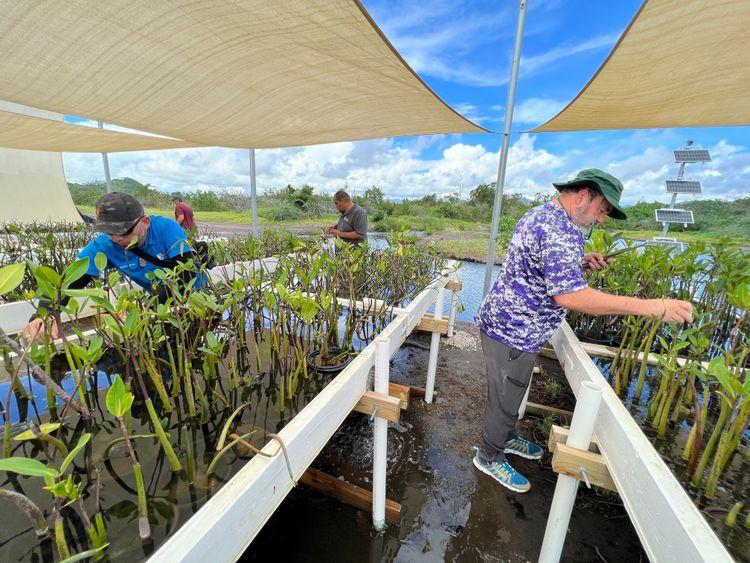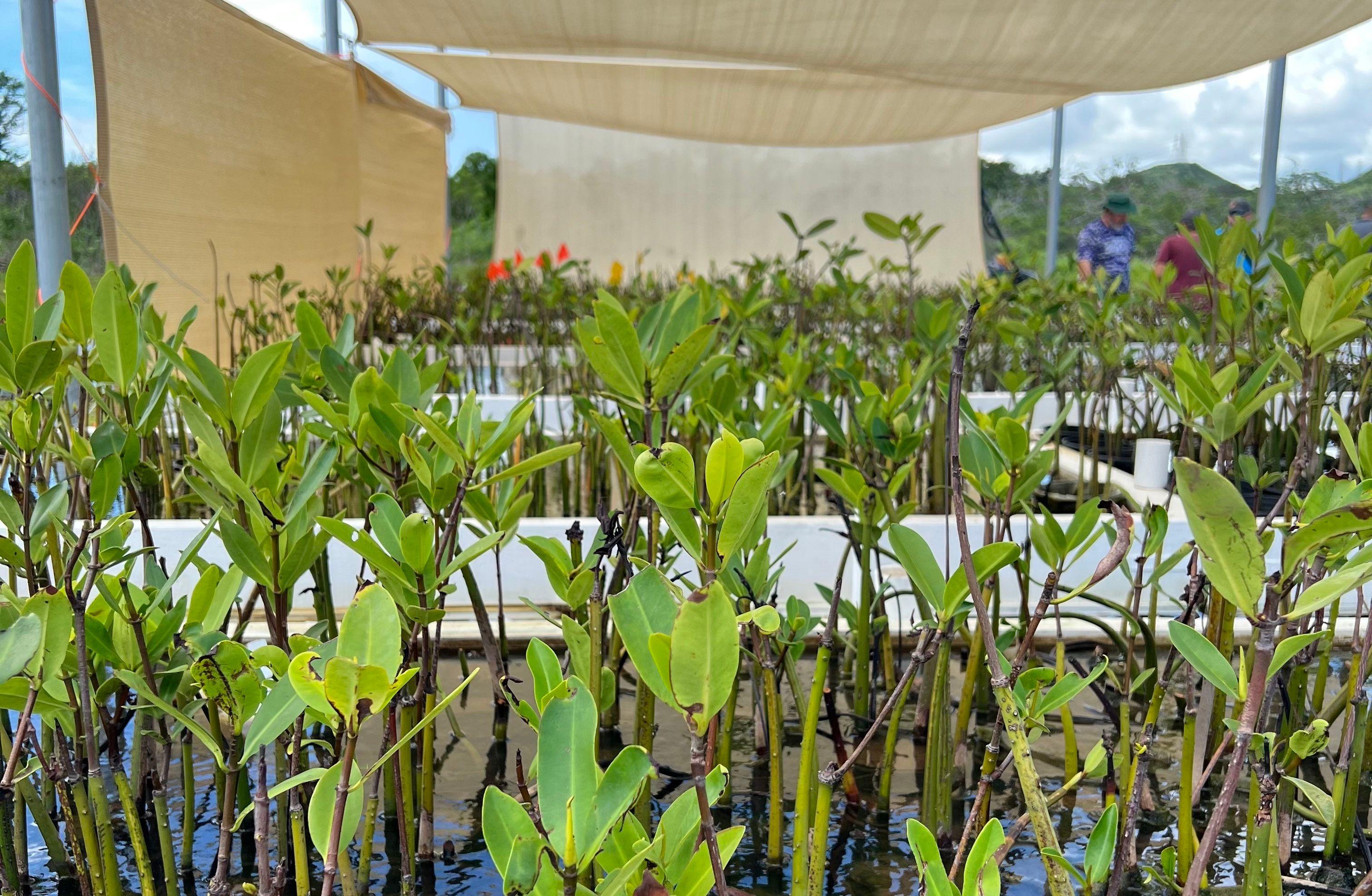The most ambitious mangrove restoration project in the United States is taking place in Puerto Rico and is on track to double in size. This is a commitment to mitigate the effects of climate change.
Located in Jobos Bay and the adjacent Aguirre State Forest natural area, this project of The Ocean Foundation (TOF), which originally contemplated the restoration of 695 acres (about 2.8 square kilometers), now plans to increase its size to around 1,400 (5.6 kilometers).
The initiative emerged in 2019, after hurricanes Irma and Maria hit the island of Puerto Rico, an unincorporated territory of the United States, in 2017.
This type of phenomenon, which has increased in frequency and severity due to climate change, gave way to the birth of the project.
The restoration attempts to mitigate the effects of climate change, as it helps to store carbon, explained Ben Scheelk, program officer at The Ocean Foundation.
Mangroves have been shown to take CO2 from the atmosphere, a gas that contributes to climate change. In addition, they create carbon sinks and are able to store five times more under water than on the surface.
This carbon is encapsulated for years, “sometimes centuries or even millennia” in soils and this project seeks to prevent the erosion or decline of mangroves from releasing carbon from sediments.
On the other hand, from the perspective of adaptation, the restoration of these mangrove areas offers protection from future storms.
“Protection against hurricanes, they do what is called 'attenuating the waves', so they reduce wave energy,” Scheelk explained.
Unlike human infrastructures to protect themselves from waves, ecosystems can be restored and at a lower cost.
“So absolutely this (the project) is not just a way to address climate change properly by removing CO2 from the atmosphere, and also keeping organic carbon in the soil. But also by providing these storm protection barriers, which protect communities, provide fish habitats, ecotourism and also circulate nutrients. So if you have a lot of nutrients going into the water, wet soil can absorb some of that and use it, without damaging the water quality,” Scheelk explained.
The addition of new restoration areas, comprising the original sections within Jobos Bay, implies the incorporation of new sites in the Aguirre State Forest, which will form a kind of interconnected area.
The beginning of the work in Jobos Bay became official with the approval of the United States Army Engineering Center project in 2019; and it has had the support of the authorities of the government of Puerto Rico.
The initiative has led to the participation of at least 40 workers on average from different sectors that work on a permanent basis.

Panoramic view of Jobos Bay. Photo: The Ocean Foundation.
Much of the work currently being done includes opening water channels and releasing some that had been obstructed.
Water is allowed to flow and dispersion sites are created, where mangrove plants grow and produce propagules (a small plant that falls into the water when mature and is carried away); these sites are topographically in higher places than the rest of the surrounding area, to avoid flooding, Scheelk said.
A nursery has also been set up with the capacity to produce 7,000 mangrove plants per year, which will then be planted in these centers. All in a plan that allows the ecosystem to recover.

Mangrove plant nursery. Photo: The Ocean Foundation.
Carbon market
One possibility of the project is that it will help the government of Puerto Rico enter the voluntary carbon market.
This is a scheme in which carbon credits can be purchased to finance sustainable projects and in which companies or users can offset the carbon footprint caused to the environment by their activities. It is called voluntary because those who enter are not required to do so under any environmental treaty.
The revenues that can be obtained from this market would be reused to support the project itself, explained Scheelk, who clarified that the goal is for the government to manage these credits exclusively, not the Foundation.
“Fundamentally, our goal is to restore the ecosystem, support the community, local jobs, and support local scientists, but a second benefit of this, which would be fantastic, is if we can enable the government of Puerto Rico to get involved in the Voluntary Carbon Market,” he said.
It is not yet clear if this will be possible, and it may require changes in the island's legislation in order to be achieved.
Mata Redonda
A small-scale parallel project (half an acre) is being carried out on the small island of Mata Redonda inside Jobos Bay.
The island had been damaged by the impact of hurricanes and the project seeks to build a living coastline around the island through the installation of biological bags, which are made up of sediments that eventually decompose.
Aerial view of restoration work in Mata Redonda. Photo: The Ocean Foundation.
A thousand mangroves were planted on the site a month ago. “Something very small, but it was eroding and we were restoring seagrass to the surrounding waters,” Scheelk said.

Mangrove planting in Mata Redonda. Photo: The Ocean Foundation.
The program officer emphasized that these types of programs highlight the participation of the community and even the boy scouts.
Future of the restoration megaproject
So far, doubling the mangrove restoration area has led to an extension of the project's completion date, with all the permits expected at the end of next year and then a process of around six years will begin.
Restoring is also a medium-term exercise. Once the project is finished, it will take a few years for the foundations laid to bear fruit, Scheelk explained.
“It's going to take many years, about a decade actually for it to fully return (nature) and mature. But we will have left the work on the ground for that to happen naturally,” he said.




Comentarios (0)